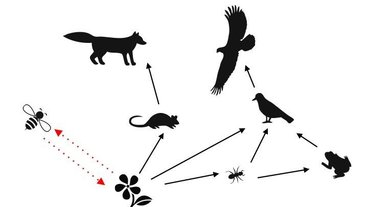
Among all pollinators (hummingbirds, bats, butterflies, flies and some beetle), bees are unique. In addition to sipping nectar to fuel their own flight, they are one of the few animals to actively gather large amounts of pollen (and hence inadvertently move pollen flower to flower) to feed themselves.

More than one-third of the world’s crop species such as alfalfa seed, sunflower, and numerous fruits and vegetables depend on bee pollination, an ecological service valued in North America at $20 billion a year. In North America beekeepers continue to experience high colony losses (30-40% loss). At the same time, the amount of crop acreage requiring bee pollination is at an all time high. The cereal grains that make up the largest part of our diets, such as corn, rice and wheat, are wind pollinated, but crop declines in the most nutritious—and arguably, most interesting—parts of our diet like fruit, vegetables, and alfalfa for meat and dairy production, are possible. Rich in protein, the pollen of many plant species serves as the principal food source for developing bee larvae. While honey bees pollinate most of our crops, other bees are also important pollinators. The solitary blue orchard bee, Osmia lignaria, flies early in the spring when it might still be too cold for honey bees, pollinating fruit trees like apples and cherries. The squash bee, Eucera pruinosa, will seek out pumpkins, squash, and other cucurbits to the exclusion of all else, making it a superior pollinator for those plants. Bumble bees make great tomato and pepper pollinators thanks to their habit of buzzing the flower to shake pollen loose. While many crops requiring pollination depend on managed bees such as honey bees, bumble bees, or blue orchard mason bees, wild bees also contribute significant pollination services. Increasing pollinator habitat in areas near crops can increase the pollination services provided by these wild, unmanaged bees.

In addition to crops, the majority of wild flowering plants are dependent on bees and other insects for pollination. These flowering plants, in turn, support countless animals, as well as ecosystem functions such as water filtration and soil nutrient retention. Maintaining bee biodiversity is crucial for long term ecosystem health.

